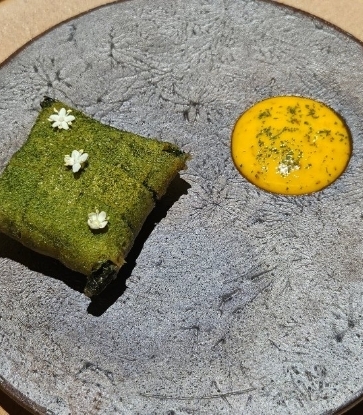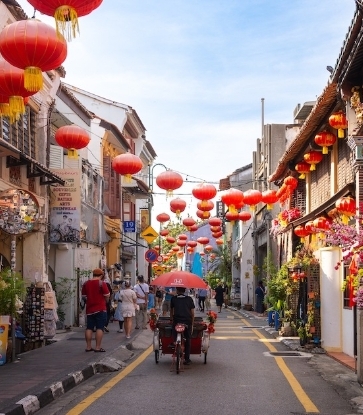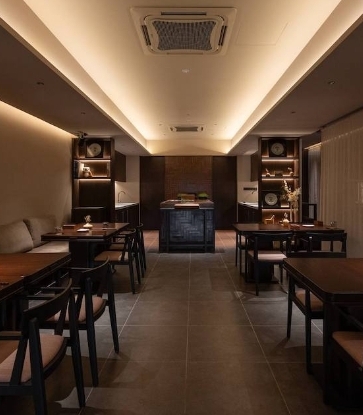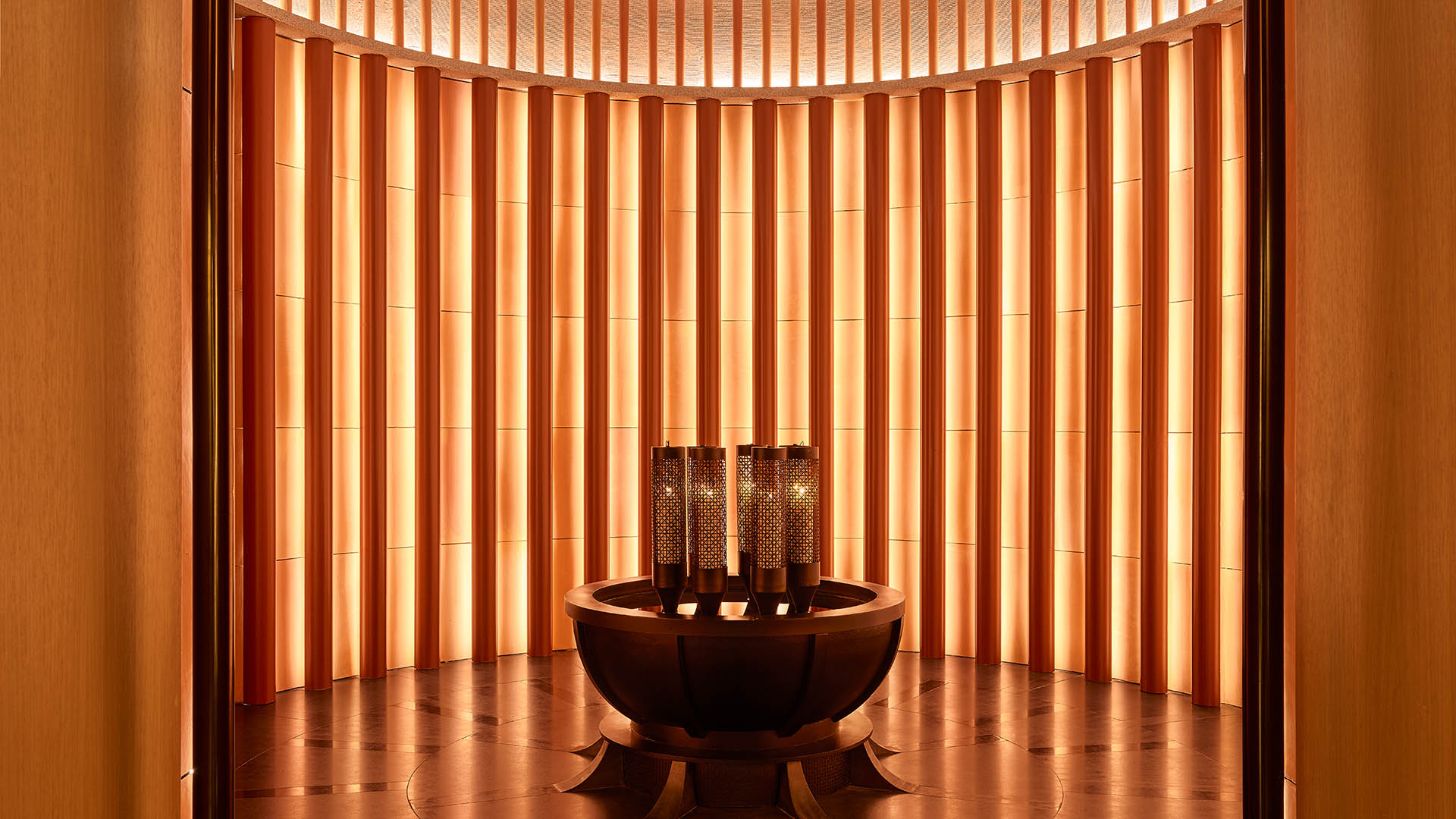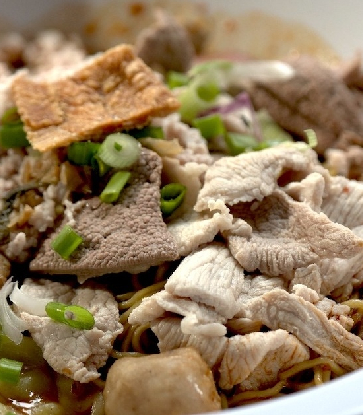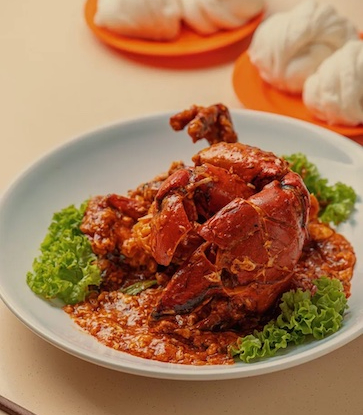Bukit Mertajam, on the mainland part of Penang, is better-known to its mainly Teochew-Chinese denizens as “Tua Sua Kah”, which, in their dialect, means “The Foot of the Big Hill”. For the sleepy hamlet lies in the shadow of an imposing sharp peak that gives the town its name. Bukit Mertajam was founded in the 19th-century by the British East India Company, which encouraged a mass influx of hardy Hakka and Teochew pioneers to clear the dense jungles in the area and replace the wild with spice and sugarcane plantations.
From out of this pastoral town came Choo Teik Seng, an energetic Hakka sojourner, who decided to cross the channel over to George Town on Penang island and seek his fortune there. Life was not easy for this earnest young man, with a wife and a toddler in tow. He found a job working as a cook at a Teochew porridge eatery in Sia Boey, George Town’s bustling market. Here, flat-bottomed wooden barges called bumboats passed by daily, busily transporting all manners of goods between the large cargo ships anchored out at sea and the warehouses lining the canal. The place teemed with coolies who toiled under the sun. These men would seek sustenance each meal-time where Choo worked, so he was kept busy throughout.

In 1965, Choo Teik Seng decided to strike out on his own — a friend had offered to give up his hawker spot on Carnarvon Street to him. That was when Choo opened Teik Seng Rice Stall. He was helped by his wife and two of his sons then — Choo Sam Ken, 13 at the time, and Choo Sam Chong, 8. Business grew through the years and they moved into their current two-shophouse location in 2010.
We sat down with Choo Sam Ken, 72, who had helped his father run Teik Seng Rice Stall for nearly 20 years before the elder Choo passed on in 1984, to chat about their family’s life experiences in running the business, now rebranded as Teksen.

Can you tell us more about your father, Choo Teik Seng?
My father, Choo Teik Seng, wanted to build a better life for his family. Where he came from — “Tua Sua Kah” — life was hard, and everyone struggled to make a living. To him, the island of Penang was “The Big City”, where all the opportunities for a better future lie.
When my father brought my mother and I to Penang, I was only three years old. We carried all our worldly possessions with us as we crossed the waters to get to George Town. There, Father could only afford to rent a small room for us to live in. Father got work as a cook’s assistant at Sia Boey. Although our family is Hakka, Father could speak Teochew fluently as Bukit Mertajam, where we came from, is a largely Teochew town. From the owner of the Teochew porridge food stall, my father learnt how to prepare all the necessary dishes for a Teochew porridge meal. Their stall was well-patronised by dock workers, bumboat sailors, trishaw-riders, and the coolies who congregated at Sia Boey for work.
We hardly got to see Father, as he was out of the house every day at the break of dawn, and only came back very late at night when we were already asleep.

And when did your father decide to start Teksen?
Father had a friend who offered his hawker license to him, and to take over his place on Carnarvon Street. After 10 years of working for someone else, Father finally decided that he wanted a place of his own. Mother and I helped him at the new Teochew porridge stall, as this was our family-owned eatery. I was 13 then. I would go straight to the stall right after school and start work.
Life was hard — I would get home each night with my feet caked in dust or mud and fall asleep straight away because I was too tired to even wash them. Two years later, I left school for good to help my parents full-time. By then, I had five younger siblings to care for — my younger brother, Sam Chong, was eight years old when he started helping out at the family stall.
Most of our regular customers then were single men, blue-collar workers — Father decided that, in order to attract a wider clientele, we should become a dai pai dong (Chinese: 大牌檔). We did that in 1980 — so, besides the usual Teochew porridge staples, we started offering freshly cooked dishes like Hakka stewed pork with yam or salted mustard, spicy Nyonya curries, and the ever-popular chap chye th’ng — a luscious soup with fishballs, prawns, fish meat, pork meatballs, pig’s skin, sea cucumber, and various vegetables. Our business went up after that, attracting many white-collar folks, who would also bring their families.

So, taking over Teksen was a natural choice for you, then?
Cooking came natural to me as our family life always revolves around food. I grew up around all these activities — the preparation of food, the cooking, the serving of the dishes. When my father passed away in 1984, I took over our family business, and I did all the cooking myself.
My wife, Tan Cheng Moy, is Teochew. We have two sons and two daughters, but only my eldest son, Choo Wei Yean, has joined the family business and has been running Teksen since we started operating at the present premises here on 08 April 2010. My other son works in the design industry — in fact, Teksen’s menu is visually designed by him.
Any special or favourite dishes which you’d like to highlight?
We’d like to think that we do every dish well. But some dishes that I’d like to highlight are the char sio bak, kangkung sambal belacan, and curry tumis with either stingray or black pomfret. All the spices we use are freshly blended, using our own special recipe.
How do you feel about getting the MICHELIN Bib Gourmand recognition?
We are very pleased to be listed in the MICHELIN Guide, which we feel is the highest form of recognition from a well-respected global brand, and a validation of all the hard work we have put in for the past 60 years.
We bear the legacy of that one man, my father, who came here with nothing but big dreams, from the “Foot of the Big Hill” to reach the peak of Penang’s gastronomic world.
All images are courtesy of Peter Yeoh.
Teksen is located at 18 & 20 Lebuh Carnarvon, George Town, 10100, Malaysia. Reserve a table via our restaurant page here.










